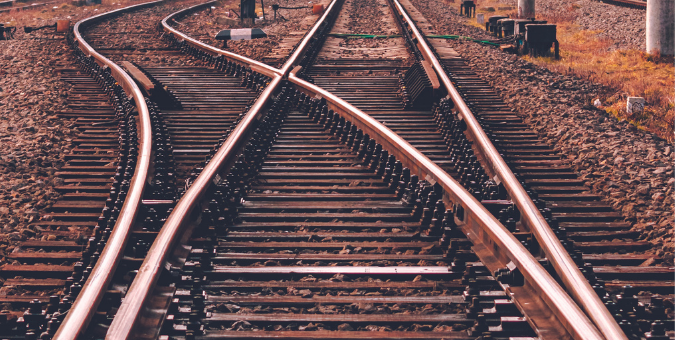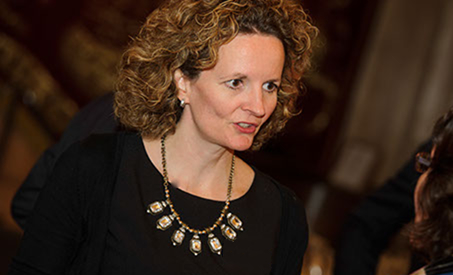
A major incident was declared by the British Transport Police on the 31 October 2021 when two trains travelling in the same direction collided at a Salisbury Tunnel Junction.
The Salisbury train crash – what went wrong?
Preliminary investigations carried out by The Rail Accidents Investigations Branch (RAIB) have revealed that the first train approaching the junction was protected by a red stop signal. The second train approaching the junction applied its breaks as it approached the red stop signal, but the train failed to slow down in time, despite the driver breaking for 12 seconds and two emergency brakes being applied. The second train ran 220 metres past the red stop signal colliding with the first train and causing it to derail.
RAIB are currently undertaking a full investigation but have released their preliminary findings, which reveal the train was unable to brake in time due to wheel slide, which was almost certainly a result of low adhesion between the wheel and the tracks. Low adhesion is a common problem on railways. It can be caused by a film produced by leaves that fall onto the track and can therefore be more of a problem during Autumn time. It can also be caused by rust or grease. It is difficult to understand why a risk which is well known within the railway industry had not been effectively managed at the scene of the accident considering the low adhesion was in a high-risk area approaching a stop signal. RAIB even carried out a full investigation report on adhesion-related incidents in Autumn 2005 after there was a significant rise in the amount taking place.
Luckily, the quick reactions of the train driver prevented the accident having more severe consequences. There were no fatalities, but 14 people were injured, including the driver who has sustained life changing injuries. 92 people had to be evacuated from both trains and many have reported the terrifying moments following the collision which could have a psychological impact on many. Psychiatric and psychological consequences from an accident such as a train crash can be far more common than physical injuries.
How are railway accidents investigated?
The Railway Accident Investigation Branch (RAIB) is an independent government agency that investigates accidents and incidents which occur on the UK main line, London Underground, other metro systems, tramways, heritage railways and the UK part of the Channel Tunnel. RAIB will be notified of an accident or incident and will decide how to respond. RAIB does not have to respond to every incident. The law gives them discretion whether to investigate less serious accidents. If they decide to investigate, a thorough investigation will be carried out with evidence being gathered from a number of sources such as witnesses, CCTV, audio, data and written records, and the trains and tracks themselves. The investigation process may then involve reconstructions, computer simulations and discussions between managers, trade unions, regulators and organisations. A copy of the report will then be sent to the organisations and individuals that will be affected by the outcome. Eventually, the report is submitted to the Secretary of State and published on the RAIB website.
How are future railway accidents prevented?
The purpose of the RAIB investigation is to prevent future accidents and improve railway safety. It is imperative that preventive action is taken to ensure repeat accidents do not occur and to ensure passengers feel safe when travelling by rail in the UK. The law states that railway operators and infrastructure managers must have processes in place as part of their safety management systems to learn from accidents and incidents. During the investigation process, RAIB will meet with organisations who will likely be affected by the safety recommendations to discuss how these can be implemented. The Office of Rail and Road (ORR) is the safety authority for Britain’s railways and has a legal responsibility for supervising safety of the railways. RAIB have no statutory power to follow up on the implementation of safety recommendations but the ORR are required to report back to RAIB with details of any implementation measures or reasons why no action has been taken.
Unfortunately, despite these safety measures, repeat accidents still occur. When repeat accidents happen, RAIB will not carry out another full investigation, instead they will publish what’s called a ‘safety digest’. A safety digest is a quick way of sharing important safety messages when safety learning has already been covered in previous investigations and rules, procedures and standards are already in place. In RAIB’s 2020 annual report, it states eight safety digests and two urgent safety advice notices were published in 2020. This means these preventative measures have not worked and potentially avoidable repeat accidents have occurred.
A RECENT history of major rail accidents in the UK
Despite these preventive measures, problems with trains, tracks and the rail network have resulted in several fatal train crashes in recent decades.
Southall rail crash 1997
On the 19 September 1997, a passenger train crashed into a freight train killing 7 people and injuring 150. The driver of the passenger train failed to slow down in response to 3 signals before crashing into the empty freight train in Southall, West London. The train was fitted with an Automatic Warning System (AWS) which sounds a warning siren if the train goes through a red signal, and an ATP safety system which should stop a train crossing a red stop signal, but both were turned off. If both these systems had been turned on the collision would have been avoided.
Ladbroke Grove rail crash 1999
The Ladbroke Grove rail crash, also known as the Paddington rail crash, occurred on the 5 October 1999 just two years after the Southall rail crash. The crash resulted in 31 deaths and 417 being injured. Two trains collided head on at a combined speed of 130mph after a train leaving Paddington station failed to stop at a red signal. The train entering Paddington station on a green signal was warned but neither trains were able to break in time. Both train drivers died in the crash. This meant it was difficult to determine the cause of the accident. An ATP system which would have stopped the train automatically once it failed to stop at the red signal had been switched off because it was not operational.
Huw Ponting, Partner in the Personal Injury team, acted for 13 claimants involved in the Ladbroke Grove crash. Huw represented passengers from both trains who had sustained psychological and physical injuries. The injuries ranged from modest to severe, including a fatality in which he was able to achieve a significant settlement for the family. Huw was a member of the Ladbroke Grove Family Steering group and was also involved in the investigation and public inquiry, representing the family’s inquest.
Grayrigg derailment 2007
On 23 February 2007, a Virgin West Coast train from London Euston to Glasgow derailed in Cumbria. Nine carriages in total derailed. Sadly, one passenger died, and 89 passengers were injured. The derailment was caused by a degraded and unsafe set of points which were not detected and repaired due to a missed track inspection on 18 February 2007. The maintenance manager had previously flagged up safety concerns to his bosses informing them that his team was under-staffed, with workers not given the right tools or enough time to carry out checks.
It is understandable that some accidents may occur due to deliberate acts or catastrophic events, but surely we are able to implement more efficient systems to prevents accidents like these happening? It will be interesting to see the results of the investigation carried out by RAIB and the investigation looking into Network Rail.
Hopefully, the outcome of both of these investigations will prevent similar accidents happening the future.


















